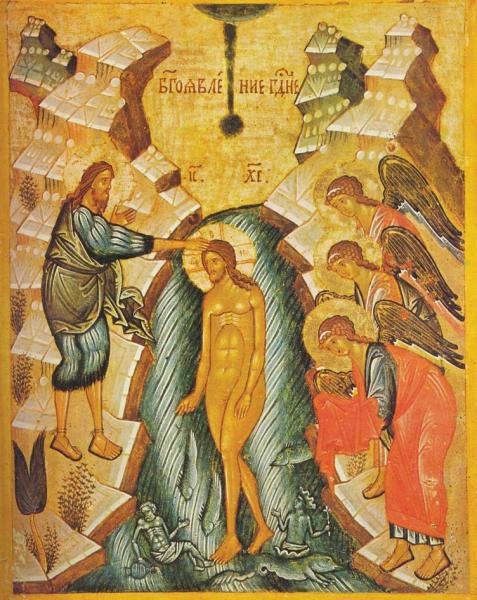The Julian calendar is a solar calendar of 365 days in every year with an additional leap day every fourth year. The Julian calendar is still used as a religious calendar in parts of the Eastern Orthodox Church and in parts of Oriental Orthodoxy as well as by the Amazigh people.
The Tusculum portrait of Julius Caesar
Russian icon of the Theophany (the baptism of Jesus by John the Baptist) (6 January), the highest-ranked feast which occurs on the fixed cycle of the Eastern Orthodox liturgical calendar
A leap year is a calendar year that contains an additional day compared to a common year. The 366th day is added to keep the calendar year synchronised with the astronomical year or seasonal year. Since astronomical events and seasons do not repeat in a whole number of days, calendars having a constant number of days each year will unavoidably drift over time with respect to the event that the year is supposed to track, such as seasons. By inserting ("intercalating") an additional day—a leap day—or month—a leap month—into some years, the drift between a civilization's dating system and the physical properties of the Solar System can be corrected.
1800 calendar, showing that February had only 28 days.
A Swedish pocket calendar from 2008 showing 29 February
February 1900 calendar showing that 1900 was not a leap year
In the older Roman Missal, feast days falling on or after 24 February are celebrated one day later in a leap year.






